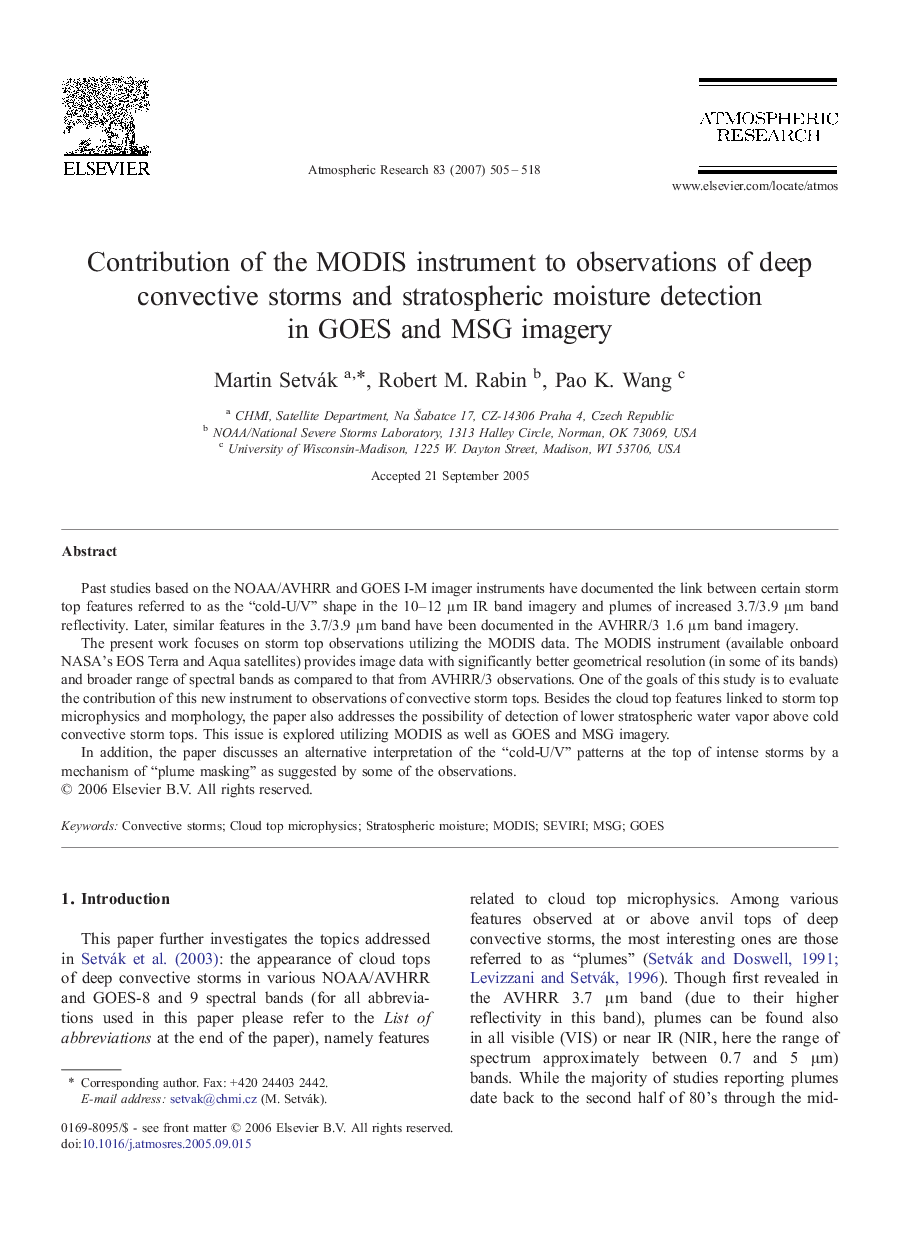| Article ID | Journal | Published Year | Pages | File Type |
|---|---|---|---|---|
| 4451351 | Atmospheric Research | 2007 | 14 Pages |
Past studies based on the NOAA/AVHRR and GOES I-M imager instruments have documented the link between certain storm top features referred to as the “cold-U/V” shape in the 10–12 μm IR band imagery and plumes of increased 3.7/3.9 μm band reflectivity. Later, similar features in the 3.7/3.9 μm band have been documented in the AVHRR/3 1.6 μm band imagery.The present work focuses on storm top observations utilizing the MODIS data. The MODIS instrument (available onboard NASA's EOS Terra and Aqua satellites) provides image data with significantly better geometrical resolution (in some of its bands) and broader range of spectral bands as compared to that from AVHRR/3 observations. One of the goals of this study is to evaluate the contribution of this new instrument to observations of convective storm tops. Besides the cloud top features linked to storm top microphysics and morphology, the paper also addresses the possibility of detection of lower stratospheric water vapor above cold convective storm tops. This issue is explored utilizing MODIS as well as GOES and MSG imagery.In addition, the paper discusses an alternative interpretation of the “cold-U/V” patterns at the top of intense storms by a mechanism of “plume masking” as suggested by some of the observations.
